Are you a home cook or chef seeking to break free from recipe monotony? This guide delivers 10 innovative spice pairings designed to transform chicken chili from predictable to extraordinary. You'll gain practical, chef-tested techniques that elevate flavor complexity without complicating your cooking process—perfect for weeknight dinners, dinner parties, or expanding your culinary repertoire.
Why Chicken Chili Deserves a Flavor Evolution
Chicken chili's comfort-food status often traps it in a cycle of cumin-chili powder repetition. Breaking this pattern isn't just about novelty; it's a response to today's globally connected kitchens where once-regional spices like sumac or garam masala are now pantry staples. The true innovation lies in respecting each spice's cultural roots while creating harmonious new expressions—transforming chili from a familiar dish into a conversation about culinary evolution.
By exploring unconventional pairings, you access layered flavors that satisfy modern palates seeking both comfort and discovery. This approach honors tradition while embracing the dynamic nature of food culture.
The Flavor Architecture Behind Spice Pairing
Effective spice pairing operates on a dual foundation: scientific principles of volatile compound interaction and intentional cultural fusion. Compounds like piperine in black pepper enhance absorption of turmeric's curcumin, while unexpected matches like Szechuan pepper and sesame oil create sensory synergy through contrasting textures (numbing heat vs. smooth richness).
Crucially, the most successful innovations balance respect for ingredient origins with creative experimentation. This isn't random mixing—it's structured culinary dialogue where each spice maintains its identity while contributing to a greater whole.
Top 10 Innovative Spice Pairings for Chicken Chili
- Turmeric + Lime Zest: Brightens earthy notes while boosting anti-inflammatory properties
- Sumac + Cilantro: Tangy freshness that cuts through bean richness without overpowering
- Paprika + Maple Syrup: Smokiness enhanced by subtle sweetness (use 1:4 ratio)
- Cumin + Orange Peel: Citrus oils dissolve earthy compounds for cleaner finish
- Coriander + Coconut Flakes: Tropical depth that thickens texture naturally
- Garam Masala + Pineapple: Warm spice complexity balanced by fruit acidity
- Star Anise + Soy Sauce: Umami depth with licorice undertones (¼ star anise per pound)
- Fennel Seeds + Lime: Mild anise notes brightened by citrus acidity
- Cardamom + Brown Sugar: Floral warmth that caramelizes beautifully
- Szechuan Pepper + Sesame Oil: Tingly heat balanced by nutty richness (toast first)
Mastering Implementation: Beyond Simple Substitution
These combinations require technique, not just ingredients:
- Sequence matters: Add heat elements (Szechuan pepper) early to mellow intensity, citrus zest at finish for vibrancy
- Texture integration: Toast whole spices before grinding to release oils; add coconut flakes in last 10 minutes
- Balance testing: After each addition, taste against plain yogurt to assess flavor clarity
- Acid calibration: Use lime juice sparingly with pineapple pairings to avoid sourness
Flavor Profile Comparison: Traditional vs. Innovative Approaches
| Standard Base | Innovative Pairing | Flavor Transformation | Ideal Occasion |
|---|---|---|---|
| Cumin, Garlic, Onion | Turmeric + Lime Zest | Earthy depth meets vibrant acidity | Quick weeknight meals |
| Chili Powder, Paprika | Sumac + Cilantro | Tangy herbal lift replacing one-note heat | Spring/summer gatherings |
| Cayenne, Jalapeño | Szechuan Pepper + Sesame Oil | Complex tingling sensation with nutty finish | Adventurous dining experiences |
| Oregano, Tomato Paste | Cardamom + Brown Sugar | Warm floral notes with caramelized sweetness | Fall holiday meals |
| Black Pepper, Bay Leaf | Garam Masala + Pineapple | Layered spice complexity with bright fruitiness | Themed dinner parties |
Execution Essentials for Culinary Success
- Protein selection: Bone-in thighs provide richer collagen for texture; remove bones after cooking
- Spice activation: Dry-toast whole spices 2 minutes before grinding to amplify aromatic compounds
- Bean integration: Add canned beans during last 15 minutes to maintain structural integrity
- Flavor fusion: Rest chili 90 minutes off-heat before serving for optimal melding
- Garnish strategy: Use avocado crema for richness or pickled red onions for acid contrast
Signature Recipe: Garam Masala & Pineapple Chicken Chili
Experience fusion cooking with this globally inspired version:
Ingredients:
- 2 tbsp olive oil
- 1 onion, diced
- 3 cloves garlic, minced
- 1 tsp grated ginger
- 1 tbsp garam masala (freshly ground)
- 1 tsp smoked paprika
- 2 lbs bone-in chicken thighs
- 1 cup fresh pineapple, diced
- 1 can fire-roasted tomatoes
- 1 can black beans, rinsed
- ½ cup coconut milk (for vegetarian version)
Method:
- Heat oil over medium; brown chicken thighs (skin-on), remove and set aside
- Sauté onions until golden, add garlic and ginger for 1 minute
- Stir in garam masala and paprika; cook 2 minutes until fragrant
- Return chicken to pot, add tomatoes and pineapple; simmer 40 minutes
- Add beans and coconut milk; cook 15 minutes more
- Remove chicken bones, shred meat, return to pot; rest 30 minutes
Visual Flavor Journey

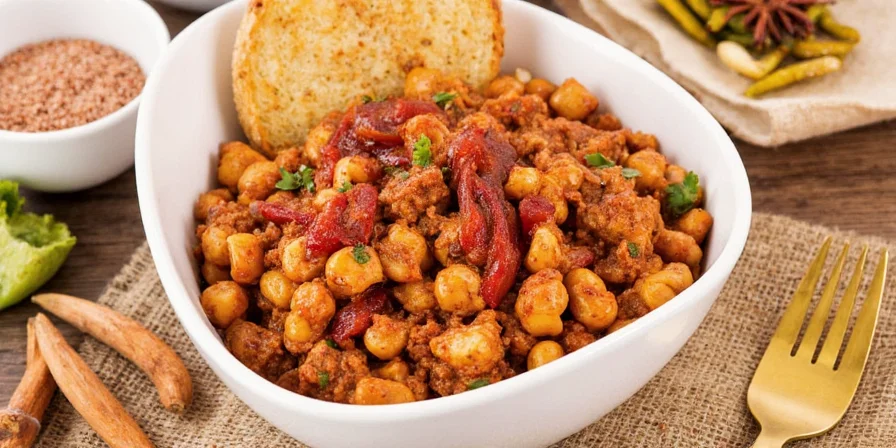
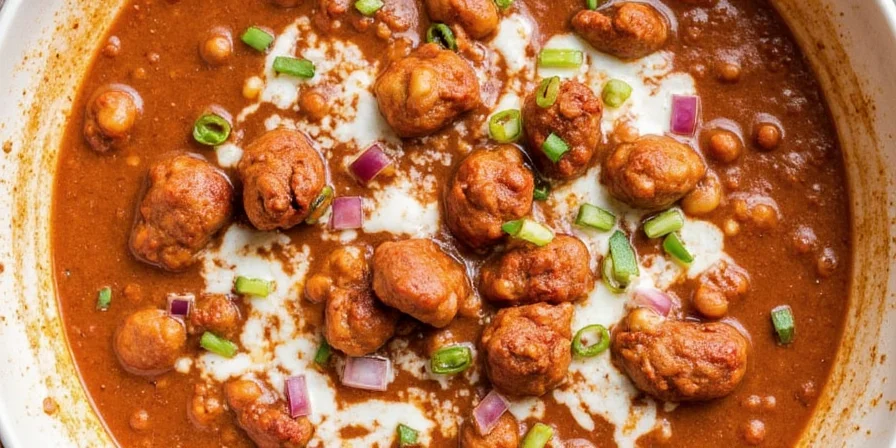
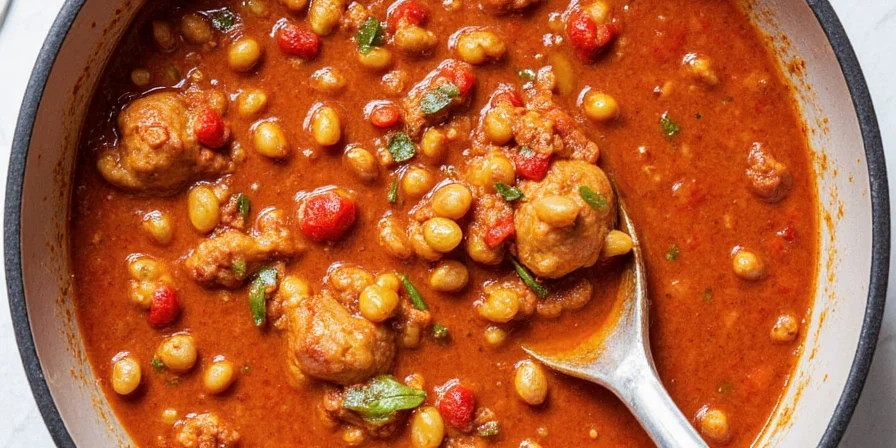
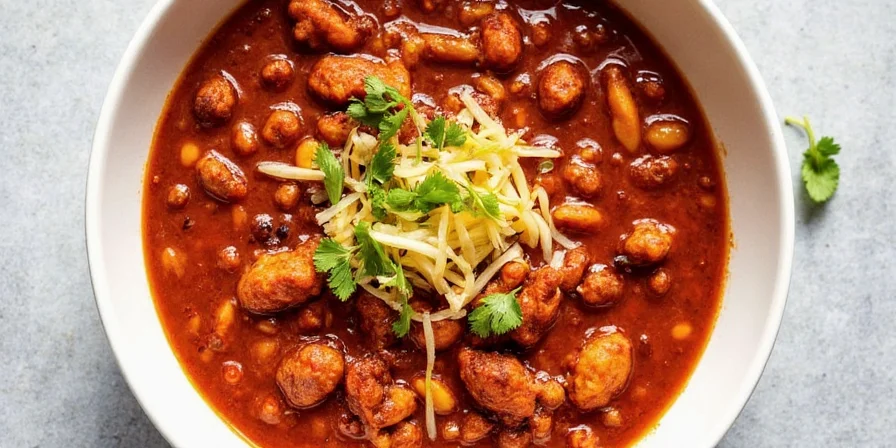
Frequently Asked Questions
Can I substitute dried spices for fresh in these pairings?
Yes, but adjust ratios. Use 1 teaspoon dried spice per 1 tablespoon fresh. For citrus elements like lime zest, dried alternatives lack volatile oils—substitute with ½ teaspoon citric acid per tablespoon of fresh zest. Always bloom dried spices in oil first to maximize flavor release.
How do I store chili with unconventional spices without flavor degradation?
Store in airtight containers with headspace for expansion. Spices like sumac or Szechuan pepper retain potency longer when separated from liquid—freeze spice blends separately and add during reheating. Consume within 72 hours for optimal flavor integrity, as volatile compounds dissipate faster in complex blends.
Are these pairings suitable for dietary restrictions?
Absolutely. For low-sodium diets, replace soy sauce with roasted mushroom powder. Vegan versions work by substituting chicken with king oyster mushrooms and using vegetable broth. The cardamom-brown sugar pairing maintains sweetness without added sugar when using date paste as thickener.
How can I troubleshoot overpowering spice combinations?
Dilute with complementary elements: add dairy (coconut milk) for heat, acid (apple cider vinegar) for earthiness, or sweetness (roasted squash) for bitterness. Never add water—it dilutes flavor. For licorice notes from star anise, a pinch of cloves rebalances the profile. Always adjust in ¼-teaspoon increments while tasting.
Conclusion: The Future of Flavor Exploration
Chicken chili's evolution reflects broader culinary trends where global ingredient access meets creative technique. These pairings aren't just recipes—they're frameworks for continuous experimentation. By understanding flavor architecture, you gain confidence to modify ratios based on seasonal ingredients or personal preferences.
Remember: true innovation balances respect for tradition with fearless creativity. Your kitchen becomes a laboratory where each pot of chili tells a story of cultural connection and personal discovery. Start with one pairing this week, and soon you'll develop your own signature combinations that make every bowl uniquely memorable.

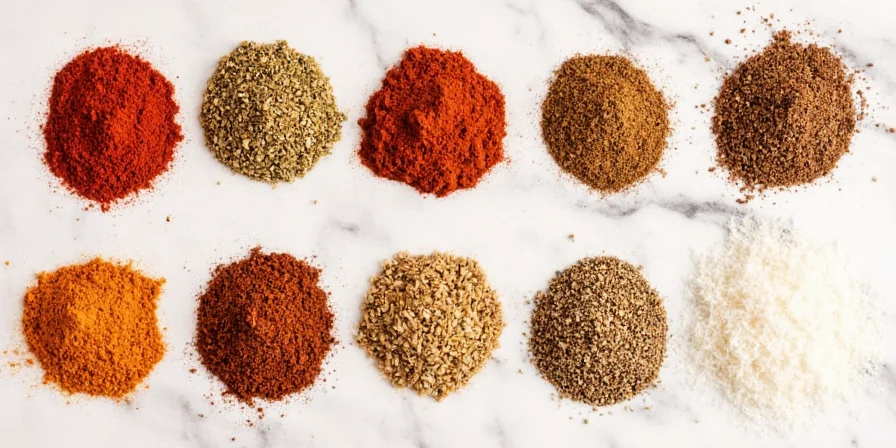









 浙公网安备
33010002000092号
浙公网安备
33010002000092号 浙B2-20120091-4
浙B2-20120091-4